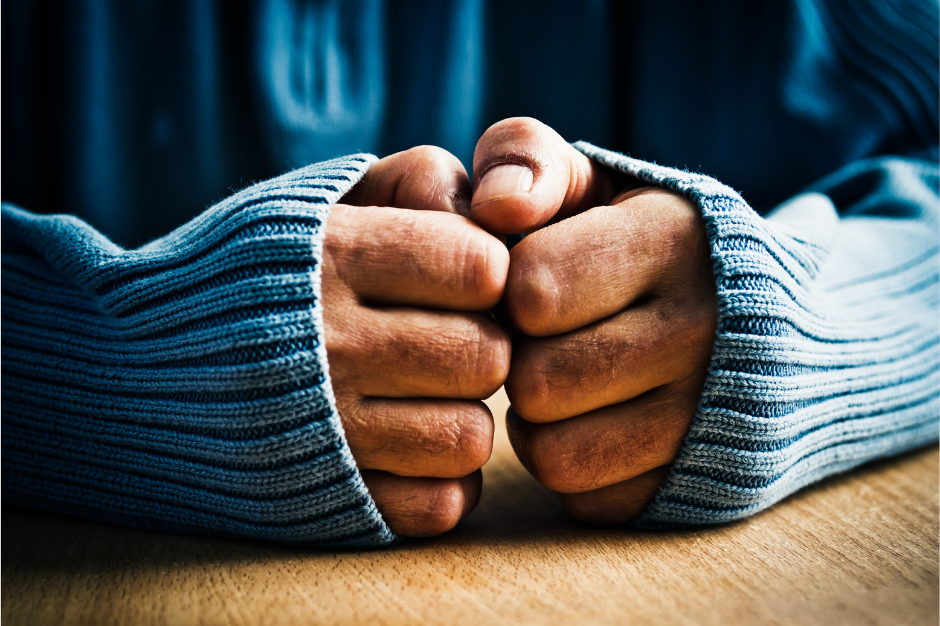

The government defines fuel poverty as a condition “where a home cannot be kept warm at a reasonable cost without bringing a person’s residual income below the poverty threshold”.
With energy bills too high for them to afford, fuel-poor households cannot turn on their heating in the depths of winter or cook hot meals.
A household is considered fuel-poor based on their income, energy efficiency rating (the higher the energy efficiency, the lower the fuel costs), and fuel prices.
In England, a property with an energy efficiency rating of C or better cannot be defined as being in fuel poverty, regardless of income or the level of energy prices.

Because of the way fuel poverty is calculated, fuel-poor households might include those who aren’t traditionally considered poor but are pushed into fuel poverty by their high energy requirements. Others, who have relatively low incomes, might also have lower energy costs and not be considered fuel-poor.
A household is considered by the government to be in fuel poverty if they meet both of the following requirements
This is known as the Low-Income Low Energy Efficiency (LILEE) indicator and is used in England to calculate fuel poverty rates.
If your home has a fuel poverty energy efficiency rating of band D or below, and your income falls below the poverty line, you are classified as ‘fuel poor’ according to the government’s indicator.
It might sound like a lot of big numbers and percentages that are tricky to understand, but it’s not your responsibility to calculate if you live in fuel poverty. In theory, the government can figure out how many fuel-poor households there are and how badly affected each household is, using their indicator.
The government then works out the fuel poverty gap – or the amount a household would need to make up to not be classed as fuel poor. This tells them how much extra a home would need not to pay their energy bills.
To get a sense of the problem at a national level, the government then adds up the fuel poverty gap for each individual household to produce an overall estimate.

An estimated 3.16 million households in England were defined as fuel poor in 2020, the most recent year for which statistics are available. This was 13.2 per cent of all households. It was 25 per cent in Scotland, 12 per cent in Wales, and 18 per cent in Northern Ireland.
National Energy Action has estimated that 8.4 million UK households will be in fuel poverty from April 2023. The charity’s figures show that the number of households in fuel poverty will increase from 4.5 million UK households last October.
The key factors that contribute to fuel poverty are the energy efficiency of a home, the cost of energy bills, and household income, according to anti-poverty charity Turn2us.
Soaring household energy bills are a big factor in the increasing numbers of people living in fuel poverty in the UK.
Bills increased by 54 per cent in April 2022, a record increase as regulator Ofgem increased the energy price cap. The monthly rise in both gas and electricity prices were by far the largest recorded since 1988.
Many people live in draughty homes and rely on heating systems that are old and inefficient. The heat escapes even when turned up to full, making it harder to bring down the total cost of bills.
Others face hardship because their income is low, or because they can’t rely on regular work. People might also feel unsupported by the benefits system and struggle to access universal credit which can have an impact on whether they can afford energy.
Those who find themselves in this situation might feel forced to prioritise buying food or other essentials and sacrifice energy bills.
An estimated 10,000 people die each year from health conditions arising or worsening from having a cold home, according to National Energy Action, which campaigns to end fuel poverty.
Fuel poverty can cause respiratory infections and bronchitis, stress on the cardiovascular system, make asthma symptoms worse or cause asthma to develop, and contribute to mental health struggles. That’s according to the charity Friends of the Earth.
Amid a cost of living crisis, families face a sharp spike in energy costs, meaning those who have old gas boilers or cookers may not be able to afford to cook a hot meal or have a hot shower.
It’s no longer a choice between heating or eating – many vulnerable people living in the UK can’t afford either and are relying on charities to survive.

Fuel poverty impacts some groups of people more than others. National Energy Action reports that 5.9 million low-income and financially vulnerable households will be in fuel poverty from April, as well as 1.8 million carers, 3.6 million people with a disability and 1.6 million in off-gas homes.
According to the government’s statistics, ethnic minorities are more likely to struggle with fuel poverty. In the two years to March 2021, an average of 12.6% of white households were in fuel poverty, compared with 19.1% of households from all other ethnic groups combined
Older people are also more likely to suffer from fuel poverty. Age UK says retired households have the highest average fuel costs compared to those of other ages. Academics at the University of York found more than 90% of large families and pensioner couples will be in fuel poverty by January 2023.
People living in the poorest and coldest regions of the UK are likely to be the worst affected by growing fuel poverty rates along with those who are already most likely to be struggling with the cost of living.

There is help out there for people facing fuel poverty (and those who just can’t afford to pay their energy bills). This might come in the form of benefits and support from the government.
For example, some people qualify for the winter fuel payment to help them pay their heating bills. This is a one-off payment made to households that include someone over pension age.